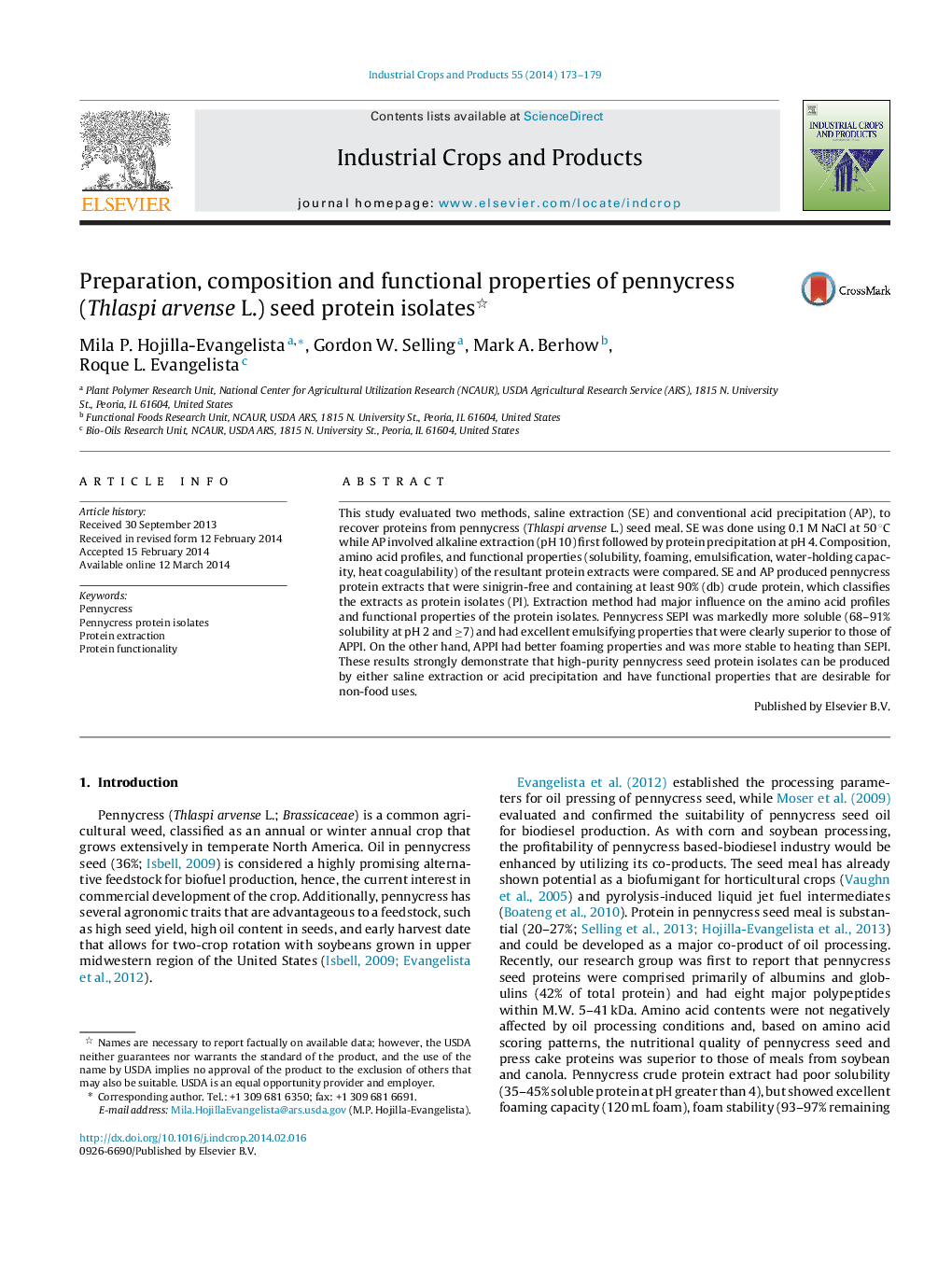| Article ID | Journal | Published Year | Pages | File Type |
|---|---|---|---|---|
| 6376812 | Industrial Crops and Products | 2014 | 7 Pages |
Abstract
This study evaluated two methods, saline extraction (SE) and conventional acid precipitation (AP), to recover proteins from pennycress (Thlaspi arvense L.) seed meal. SE was done using 0.1 M NaCl at 50 °C while AP involved alkaline extraction (pH 10) first followed by protein precipitation at pH 4. Composition, amino acid profiles, and functional properties (solubility, foaming, emulsification, water-holding capacity, heat coagulability) of the resultant protein extracts were compared. SE and AP produced pennycress protein extracts that were sinigrin-free and containing at least 90% (db) crude protein, which classifies the extracts as protein isolates (PI). Extraction method had major influence on the amino acid profiles and functional properties of the protein isolates. Pennycress SEPI was markedly more soluble (68-91% solubility at pH 2 and â¥7) and had excellent emulsifying properties that were clearly superior to those of APPI. On the other hand, APPI had better foaming properties and was more stable to heating than SEPI. These results strongly demonstrate that high-purity pennycress seed protein isolates can be produced by either saline extraction or acid precipitation and have functional properties that are desirable for non-food uses.
Related Topics
Life Sciences
Agricultural and Biological Sciences
Agronomy and Crop Science
Authors
Mila P. Hojilla-Evangelista, Gordon W. Selling, Mark A. Berhow, Roque L. Evangelista,
